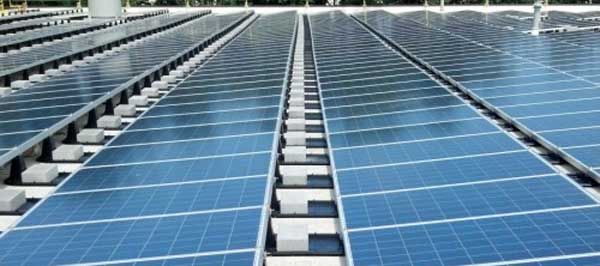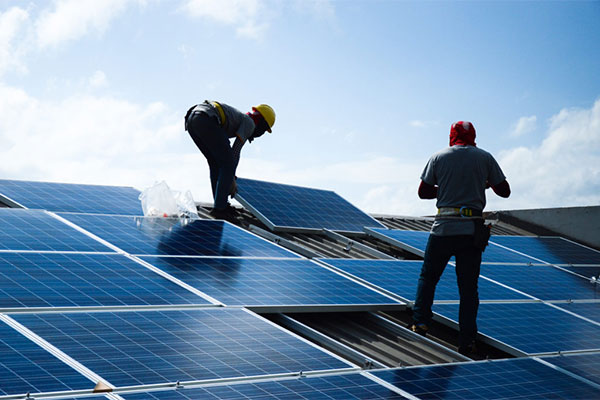Ballast is a common alternative used on solar installations unable to penetrate either the roof or the ground. On low-sloped, flatter rooftops, many building owners don’t want to poke holes through the roof. Temperamental ground-mounts have some of the same concerns; solar arrays installed on top of landfill caps cannot penetrate that liner.
That’s where solar ballast comes in. Concrete blocks are placed throughout a project to secure an array to the ground or the roof and prevent wind lift or other movement, all without having to make any (or as many) penetrations.
Cael Schwartzman, lead solar design engineer at Orion Solar Racking, explained there are many factors that go in to determining how much ballast a solar array needs. Most are pretty obvious: size and orientation of array; physical project location (wind, seismic factors); roof shape, height and strength; and type of racking used.
Project jurisdiction must also be considered, as Schwartzman pointed out, because various jurisdictions have different code requirements.
“A licensed structural engineering professional engineer (P.E.) should determine the size/amount of ballast needed,” Schwartzman said. “If a racking company has a P.E. on staff, then they can offer this service. If not, the customer or racking company can source a consultant P.E. to perform the calculation.”
Common rectangular-sized ballast blocks can be purchased at a home improvement store or anywhere that carries masonry blocks. The sources for unique block shapes and sizes specific to a certain racking system are provided by the racking manufacturer.
“The racking design will dictate the maximum size of ballast blocks that can be used,” Schwartzman said. “A system should be able to hold multiple blocks in each ballast pan such that weight can be added to or subtracted from a specific spot on the array. This is necessary because ballast weight isn’t always uniform throughout an array. More weight may be required at corners or specific areas compared with other areas.”
The core element of ballast—concrete blocks—hasn’t changed much since the beginning of solar installations.
But project and racking design has led to the biggest evolution in ballast—less is best. By using wind tunnel analysis, the amount of ballast weight needed on today’s solar projects is less than before.
Changing how panels are interconnected allows for increased load sharing and an overall drop in needed ballast. Racking companies incorporating wind deflectors makes an array more aerodynamic and less ballast is needed to hold everything down.
An emerging issue with solar ballast is the breakdown of the concrete. Sam Veague, vice president of commercial sales at Ecolibrium Solar, said common concrete landscaping pavers can deteriorate through exposure to UV light, moisture and freezing/thawing.
“Depending on the design of the racking system, cracked or broken ballast blocks may fall out of the racking and end up with some or all of the ballast laying on the roof,” Veague said. “Thus [the ballast] is no longer doing its job of adding weight to the system to hold it in place. Broken chunks of concrete on the roof can damage the roof membrane—maintenance personnel step on the pieces, grinding or tearing the roof membrane.”
Veague recommends ensuring solar installers use concrete that has the appropriate rating for the local environmental conditions. Concrete is available in a range of ratings and quality levels, so a little homework can lead to years of solar success. Using high quality racking components also helps with ballast installations.
“Use a racking product with a ballast pan that fully supports the ballast block,” Veague said. “This means in the case of cracked or broken concrete, it is still held captive by the racking system.”
While there have been ideas for alternative ballast materials (jugs of water have been considered), concrete ballast isn’t going anywhere any time soon. Essentially simpler to install than penetrating systems—mostly from fewer pieces of hardware and less skill needed—ballast systems do require some technical know-how.
With the right dedication to installation precision, ballasted solar systems can be a successful alternative to penetrating systems.
















Comments